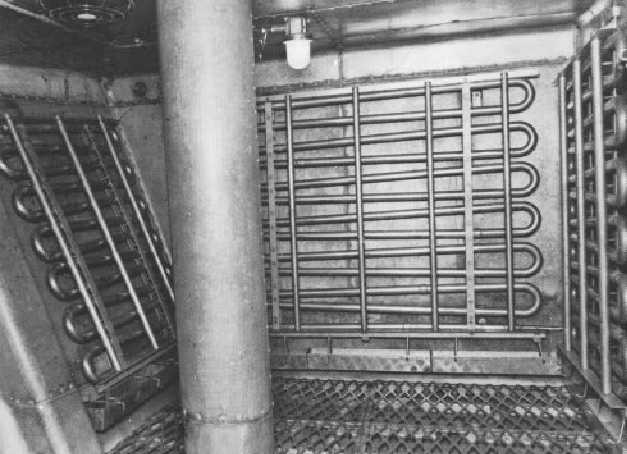the valve and allowing more refrigerant to enter
the cooling coil. When the temperature at the
control bulb falls, the pressure above the
diaphragm decreases and the valve tends to close.
Thus, the temperature near the evaporator outlet
controls the operation of the TXV.
Evaporator
The evaporator consists of a coil of copper,
aluminum, or aluminum alloy tubing installed in
the space to be refrigerated. Figure 10-4 shows
some of this tubing. As mentioned before, the
liquid R-12 enters the tubing at a reduced
pressure and, therefore, with a lower boiling point.
As the refrigerant passes through the evaporator,
the heat flowing to the coil from the surrounding
air causes the rest of the liquid refrigerant to boil
and vaporize. After the refrigerant has absorbed
its latent heat of vaporization (that is, after it is
entirely vaporized), the refrigerant continues to
absorb heat until it becomes superheated by
approximately 10°F. The amount of superheat is
determined by the amount of liquid refrigerant
admitted to the evaporator. This, in turn, is
controlled by the spring adjustment of the TXV. A
temperature range of 4° to 12°F of superheat is
considered desirable. It increases the efficiency of
the plant and evaporates all of the liquid. This
prevents liquid carry-over into the compressor.
Compressor
The compressor in a refrigeration system is
essentially a pump. It is used to pump heat uphill
from the cold side to the hot side of the system.
The heat absorbed by the refrigerant in the
evaporator must be removed before the refrigerant
can again absorb latent heat. The only way the
vaporized refrigerant can be made to give up the
latent heat of vaporization that it absorbed in the
evaporator is by cooling and condensing it.
Because of the relatively high
47.93
Figure 10-4.-Evaporator tubing.
10-5


